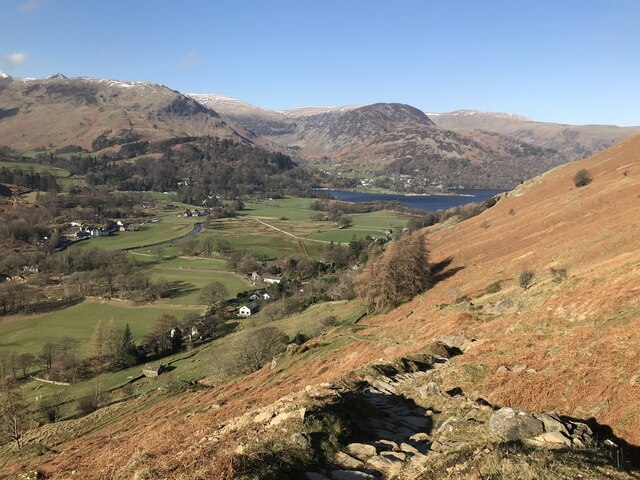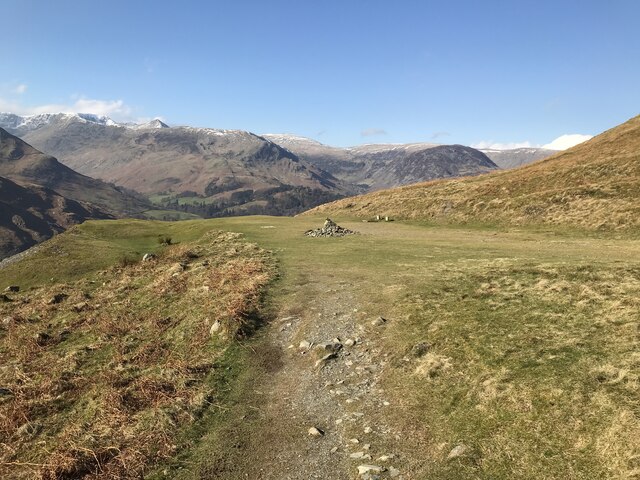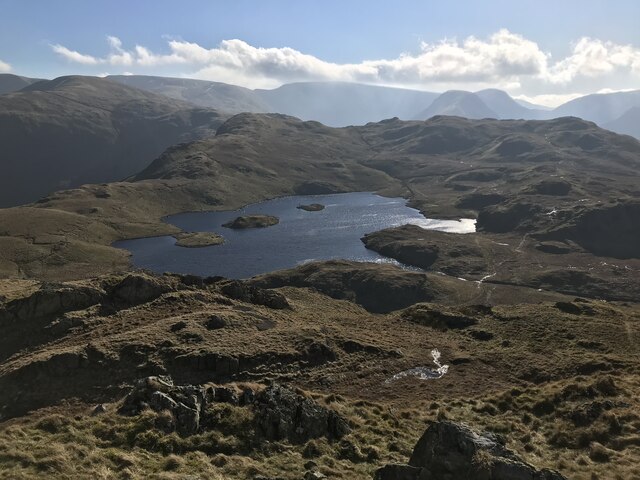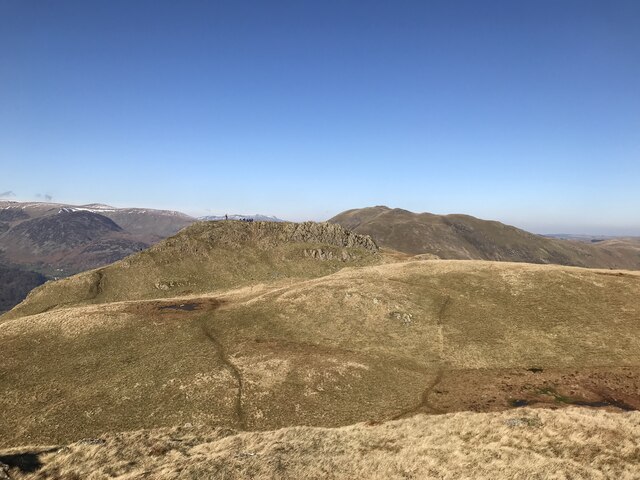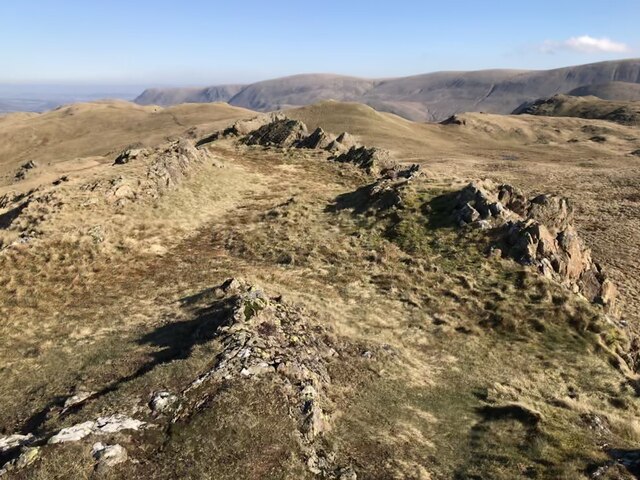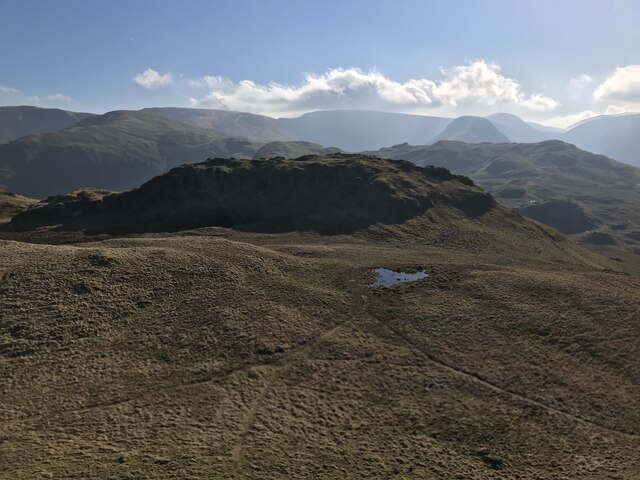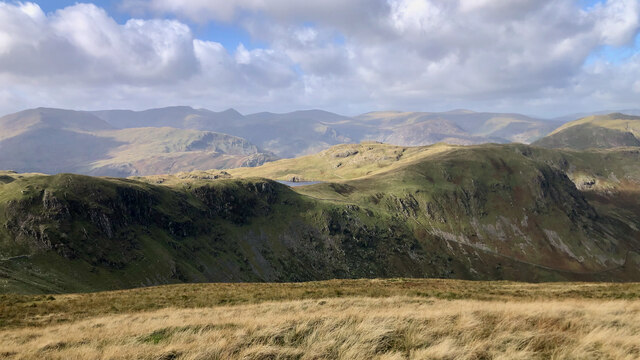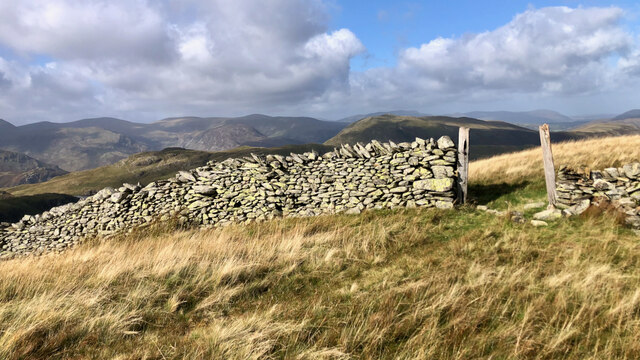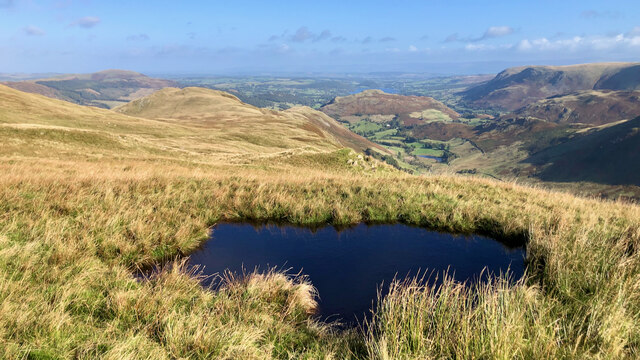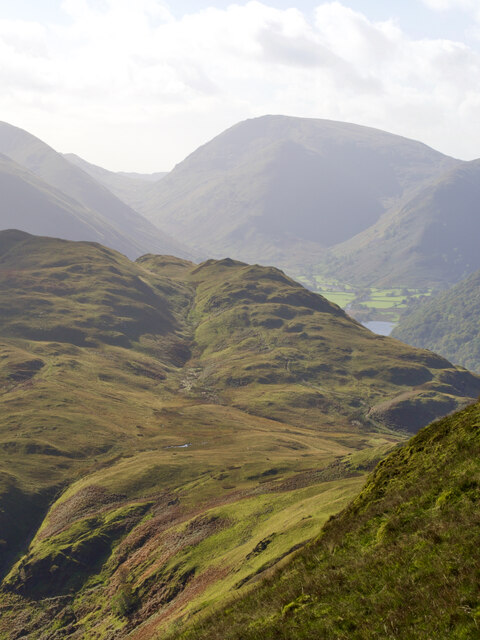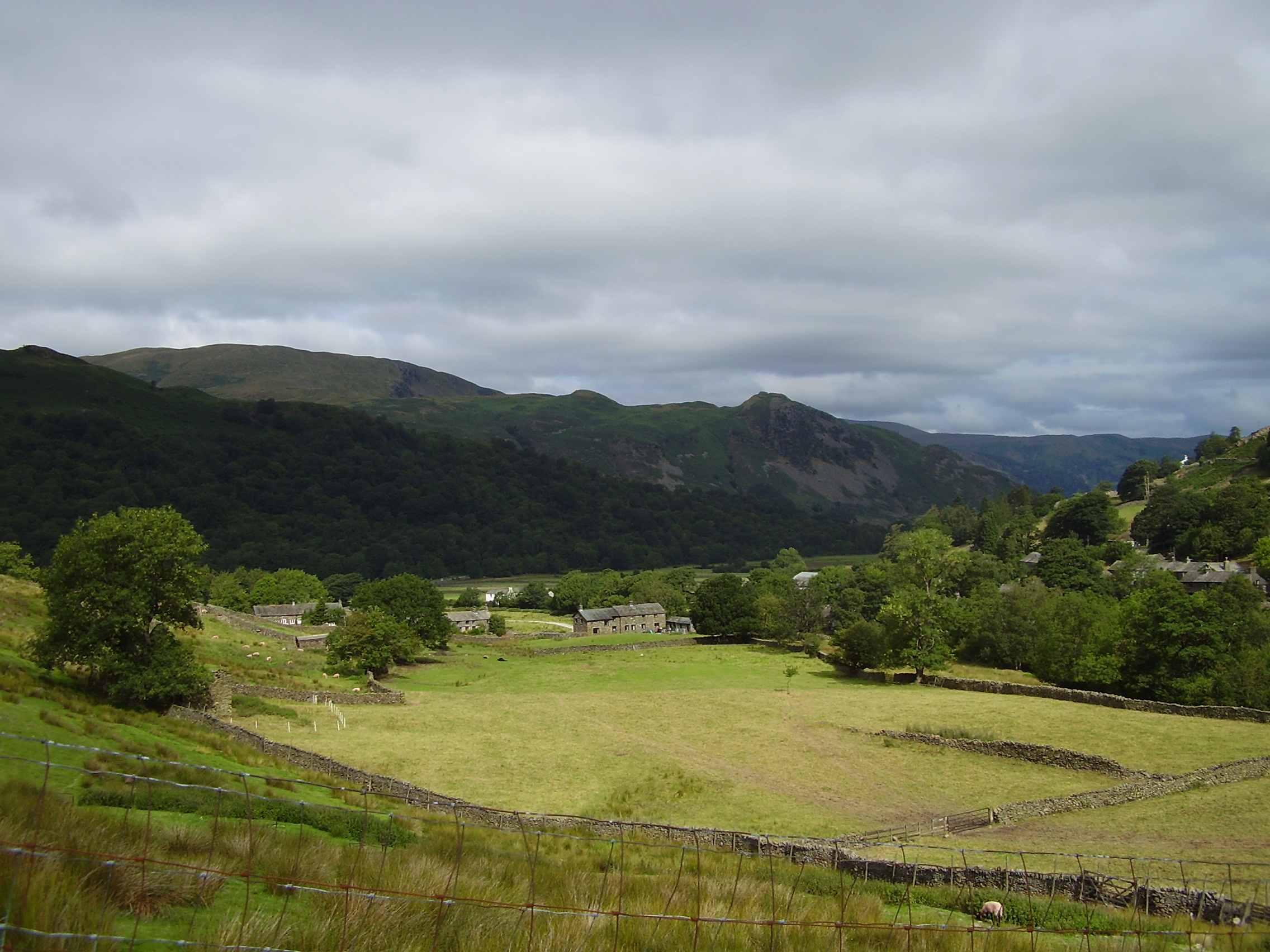Angletarn Pikes
Hill, Mountain in Westmorland Eden
England
Angletarn Pikes
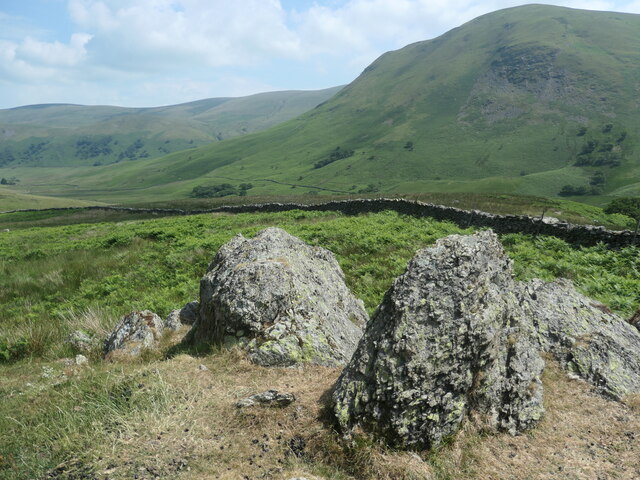
Angletarn Pikes is a prominent hill/mountain located in the Westmorland region of England, specifically in the Lake District National Park. It stands at an elevation of 575 meters (1,886 feet) and is situated between the valleys of Martindale to the east and Patterdale to the west. The name "Angletarn" is derived from the tarn (a small mountain lake) located at the foot of the hill.
The twin peaks of Angletarn Pikes are a distinctive feature of the landscape and are a popular destination for hikers and nature enthusiasts. The hill offers breathtaking panoramic views of the surrounding valleys, including the sparkling waters of Ullswater Lake to the west and the picturesque Martindale Valley to the east.
The ascent to Angletarn Pikes can be challenging, with steep and rocky sections that require proper hiking equipment and experience. However, the effort is rewarded with stunning vistas and a sense of accomplishment upon reaching the summit.
The area around Angletarn Pikes is rich in flora and fauna, with heather, bracken, and grasses covering the slopes. Wildlife such as red deer, sheep, and birds can often be spotted during the climb.
For those seeking a longer hike, Angletarn Pikes can be incorporated into a larger circuit, including other nearby fells such as Beda Fell and Place Fell. The hill/mountain offers a true taste of the natural beauty and rugged terrain that the Lake District is famous for.
If you have any feedback on the listing, please let us know in the comments section below.
Angletarn Pikes Images
Images are sourced within 2km of 54.525233/-2.9080723 or Grid Reference NY4114. Thanks to Geograph Open Source API. All images are credited.
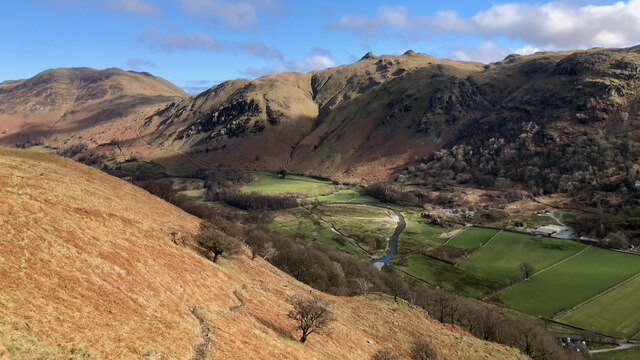
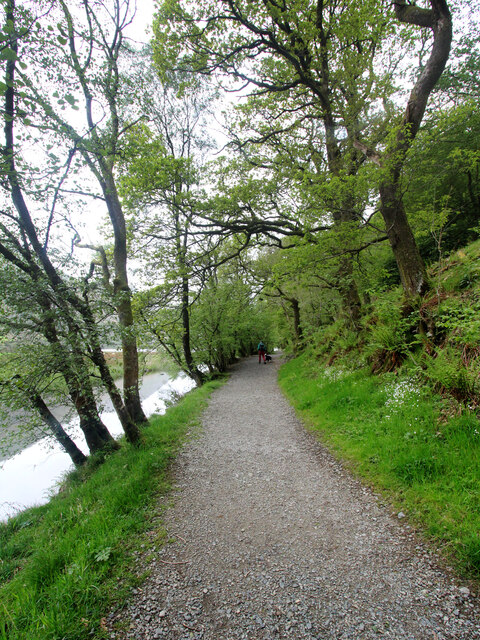
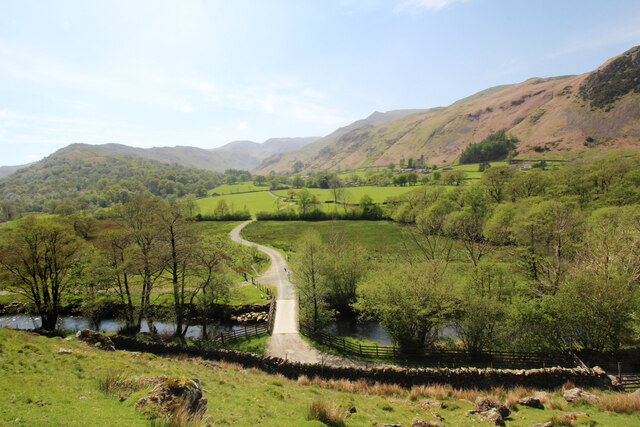
![Romano-British Enclosed Stone Hut Circle Settlement &quot;Settlement site which covers an area of ca 2 acres with the usual arrangement of circular huts and enclosures. One irregular enclosure has well-preserved orthostats of unusual size, many of which stand 3 ft above the ground. The principal enclosure is sub-divided into 2 main divisions, each with a clearly marked entrance on the E, whilst the walls 7-8 ft in thickness are considerably wider than the walls of the village. The part of the village which lies S of the beck shows only traces of a few huts. It is suggested that there may have been an enlargement or rebuilding of the village on more than one occasion (S1048, S1361). See the RCHM 1936 Westmorland (S1389 p. 166-167). The monument is a Romano-British enclosed stone hut circle settlement located in the remote valley of Bannerdale, on a sloping shelf either side of Heck Beck which runs through the site. It includes an enclosure wall 0.9m - 1.4m wide and 0.6m high which is visible at the south-west, north and north-east sides of the settlement only. A mound of large outcropping rocks is incorporated into the wall in the north-west side adjacent to which is a re-entrant or inwardly pointing entrance. South of Heck Beck, and within the enclosure wall, are 3 hut circles having internal diameters of between 1.4 - 7.3m. Immediately north of the beck is an area of irregular small enclosures, with a well-defined entrance of flat stones through the enclosure wall, within which are 5 hut circles with internal diameters between 1.5-6.4m. At the north-eastern end of the site 3 sub- rectangular enclosures, two of which have entrances defined by large, flat stones, have been constructed against the internal side of the enclosure wall. Close by are 2 hut circles with internal diameters of 6.2 and 4.5m. Dominating the north-eastern end of the settlement is a well preserved irregular enclosure with walls up to 7.3m thick constructed of stones standing up to 0.9m high. This enclosure is sub-divided into 2 main parts, each with clearly marked entrances on the east, and is thought to indicate a rebuilding and/or enlargement of the settlement. A modern drystone wall running across the monument is excluded from the scheduling although the ground beneath it is included. The monument is a good example of a R-B enclosed stone hut circle settlement which exhibits several phases of occupation and activity. Its earthworks survive well, preserve considerable detail of the layout of the site, and will facilitate further study of Romano-British settlement patterns in the area (S905, S904).&quot;
‘Heritage Gateway - Results’. 2012. Heritagegateway.org.uk &lt;<span class="nowrap"><a title="https://www.heritagegateway.org.uk/Gateway/Results_Single.aspx?uid=2886004&amp;resourceID=801" rel="nofollow ugc noopener" href="https://www.heritagegateway.org.uk/Gateway/Results_Single.aspx?uid=2886004&amp;resourceID=801">Link</a><img style="margin-left:2px;" alt="External link" title="External link - shift click to open in new window" src="https://s1.geograph.org.uk/img/external.png" width="10" height="10"/></span> &gt; [accessed 15 October 2022]](https://s2.geograph.org.uk/geophotos/07/31/14/7311498_e48d91d1.jpg)
Angletarn Pikes is located at Grid Ref: NY4114 (Lat: 54.525233, Lng: -2.9080723)
Administrative County: Cumbria
District: Eden
Police Authority: Cumbria
What 3 Words
///manuals.cooking.roughest. Near Ambleside, Cumbria
Nearby Locations
Related Wikis
Angletarn Pikes
Angletarn Pikes is a fell in the English Lake District near the village of Patterdale. Its most notable feature is Angle Tarn from which it derives its...
Angle Tarn (Patterdale)
Angle Tarn is a tarn in Cumbria, England, within the Lake District National Park, about a mile north-east of Hartsop. Located at an altitude of 479 m...
Brock Crags
Brock Crags is a fell in the English Lake District, standing above Hartsop in the Far Eastern Fells. It forms part of the perimeter of Martindale, lying...
Hartsop
Hartsop is a small village in the English Lake District. It lies in the Patterdale valley, near Brothers Water, Hayeswater and Kirkstone Pass. It consists...
Patterdale
Patterdale (Saint Patrick's Dale) is a small village and civil parish in the eastern part of the English Lake District in the Eden District of Cumbria...
Arnison Crag
Arnison Crag is a fell in the English Lake District, an outlier of the Fairfield group in the Eastern Fells. It looks down on Patterdale village and the...
The Nab
The Nab is a fell in the English Lake District. It has a moderate height of 576 metres (1,890 feet), and lies in the quieter eastern high ground between...
Rest Dodd
Rest Dodd is a fell in the English Lake District. It is situated in the quieter far eastern region of the national park and reaches a height of 696 metres...
Nearby Amenities
Located within 500m of 54.525233,-2.9080723Have you been to Angletarn Pikes?
Leave your review of Angletarn Pikes below (or comments, questions and feedback).
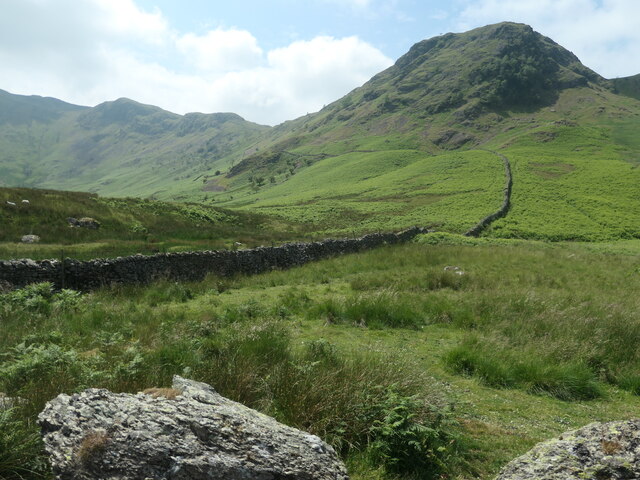
![Red deer, below Bedafell Knott, Bannerdale 300 metres away, but well aware of me. Red deer are more usually seen on the east [Nab] side of Bannerdale.](https://s3.geograph.org.uk/geophotos/06/91/67/6916723_c7298698.jpg)
![Access track to a field barn, Bannerdale The barn [but not the tree it is under!] is shown on the large-scale OS map surveyed in 1860.](https://s0.geograph.org.uk/geophotos/06/91/67/6916732_3f56a941.jpg)
